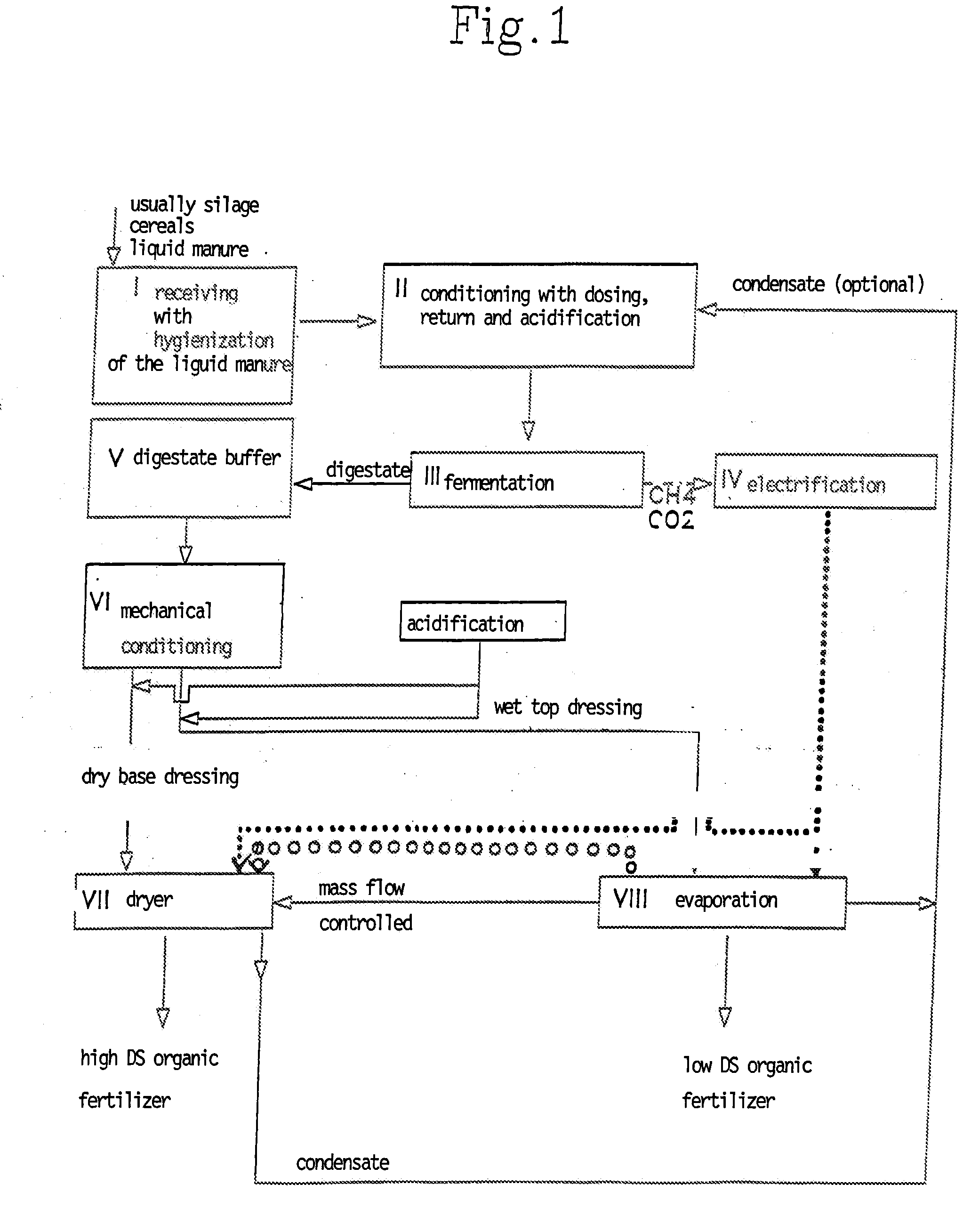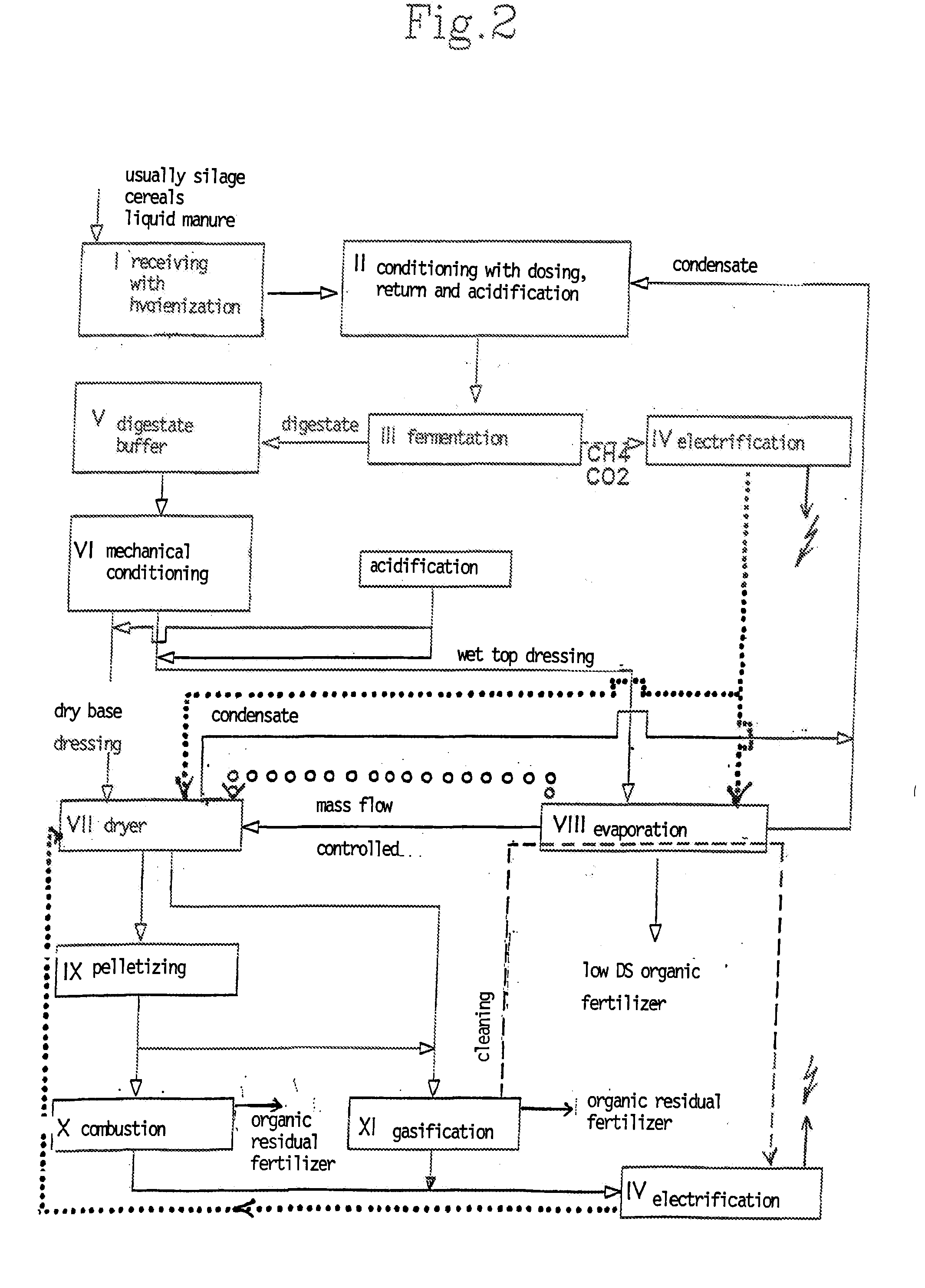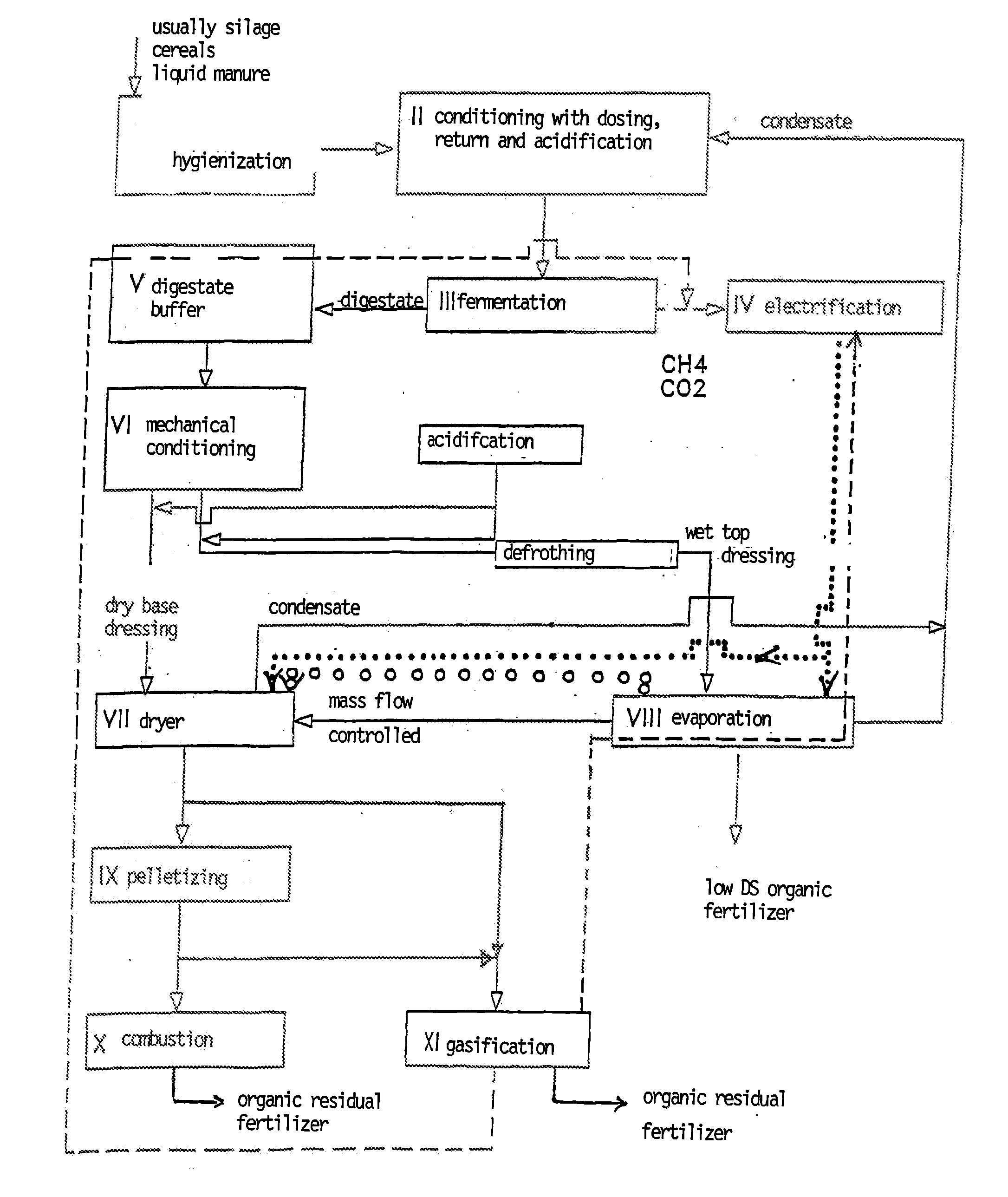Method and device for the treatment of organic residual products of biogas systems
a biogas system and organic bioresidual technology, applied in biochemistry equipment, biochemistry equipment and processes, applications, etc., can solve the problems of deficiency of nitrogen content in the dry base dressing stemming from drying the digestate, non-fermentable residuals remaining, etc., to achieve a higher energy yield, improve the mass flow of the top dressing, and reduce the effect of was
- Summary
- Abstract
- Description
- Claims
- Application Information
AI Technical Summary
Benefits of technology
Problems solved by technology
Method used
Image
Examples
Embodiment Construction
[0040]The flows as shown in the FIGs. are symbolized as follows:
mass flow-----------gas...........thermal energyoooooooooooalternative heat
[0041]Referring now to FIG. 1 there is illustrated in a diagrammatic flow diagram how maize silage, cereals and / or liquid manure or the like is furnished to a receiving station (I) for hygienizing the liquid manure. After this, this biological starting material is recycled including dosing, return (II) and, as a rule, also including preacidification. Preacidification serves to digest complex carbon compounds since the fermentation bacteria of the subsequent fermentation(III) preferably deplete only simple carbon compounds. Preacidification usually requires attaining a pH of 6.0 or lower. The residence time of the contaminated substance input in preacidification depends on how long it takes to digest the individual components. Thus, for instance, press remainders such as solid peel residuals require a longer residence as compared to organica...
PUM
| Property | Measurement | Unit |
|---|---|---|
| temperature | aaaaa | aaaaa |
| pH | aaaaa | aaaaa |
| temperature | aaaaa | aaaaa |
Abstract
Description
Claims
Application Information
 Login to View More
Login to View More - R&D
- Intellectual Property
- Life Sciences
- Materials
- Tech Scout
- Unparalleled Data Quality
- Higher Quality Content
- 60% Fewer Hallucinations
Browse by: Latest US Patents, China's latest patents, Technical Efficacy Thesaurus, Application Domain, Technology Topic, Popular Technical Reports.
© 2025 PatSnap. All rights reserved.Legal|Privacy policy|Modern Slavery Act Transparency Statement|Sitemap|About US| Contact US: help@patsnap.com



